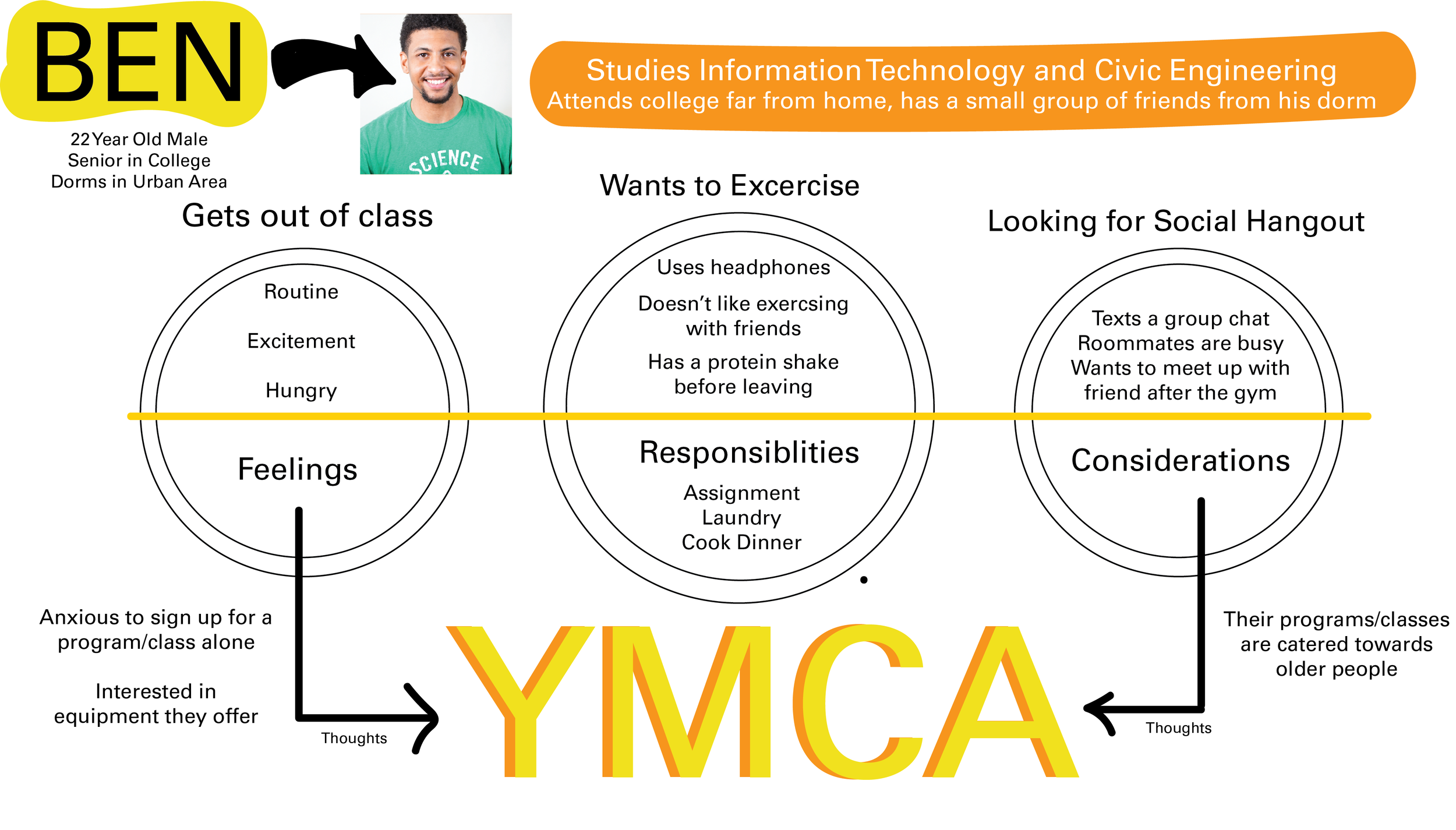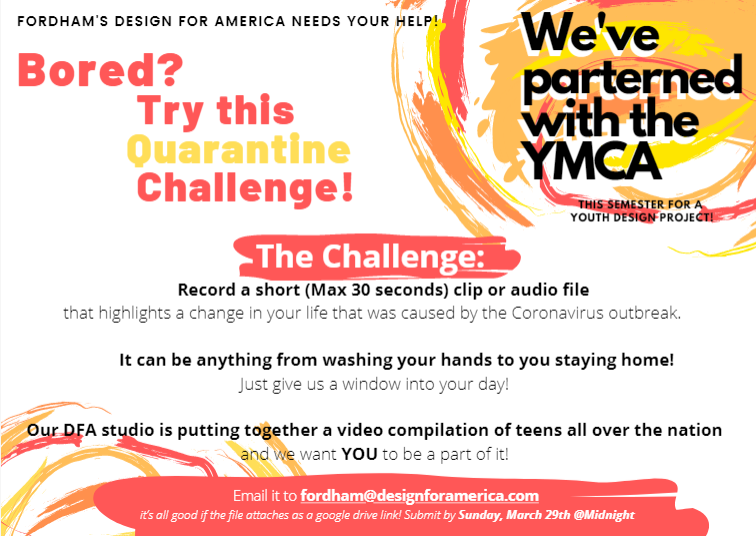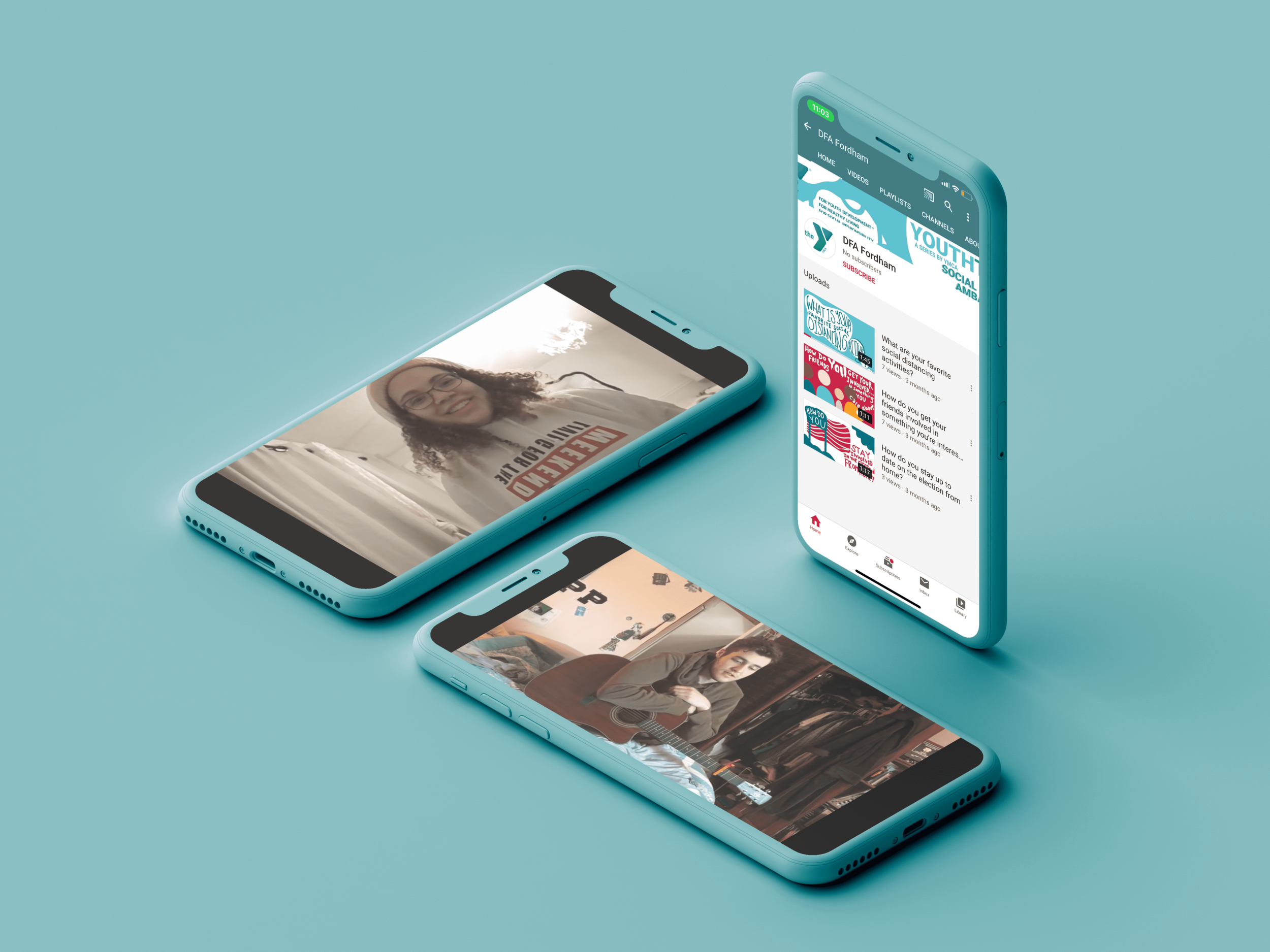
Encouraging youth to become changemakers at their local YMCA’s.
The Problem:
The YMCA of USA reached out to Design for America to address a problem within their business: their youth membership rates had been rapidly dwindling. They wanted to find a way to reach out to youth to bring them back to the Y, with a focus on making the Y a place for youth to make change in their communities. After exploring this problem space, my team and I (which consisted mainly of Nora Doyle, Rocio Sergio and Steph Lawlor, as well as Isabel Leckie, Elizabeth Messina and Kyle Burnett) decided to focus on the following problem statement: How can we change the stigma surrounding youth activism in order to empower youth to express themselves and participate in activism?
Skills:
Project Management, Presentation Design, Secondary Research, Affinity Mapping, Personas, Journey Maps, User Flows, Wireframing, Prototyping, Visual Design
Software:
Illustrator, InDesign, Miro
Research
My team and I began the project by hosting a user experience design workshop to introduce potential members to our organization. We ran through a quick design sprint activity, and then revealed the project we were working on that semester. This helped us gain 5 new members, which was very exciting. We then began to conduct outreach to local YMCA’s, conduct interviews with various leads of youth activist groups, as well as young people between the ages of 14 and 22, which was our client’s target demographic. We researched why young people are not engaging in YMCA programs anymore, as well as learned why youth do and do not engage in activism. I then led a research synthesis via affinity mapping with my team.
From this we gained 3 key insights that would help us shape the next part of our project:
Socialization is an important motivator for teen participation.
Why this matters: Young people are often too scared to join programs on their own. It is extremely important for youth to represented programs, which is often not found in YMCA exercise classes, given the older demographic of those who participate. Youth are also heavily influenced by their older peers.
“Youth don’t want old people telling them how to be youth.” (DoSomething.org Interview)Before teens can be changemakers, they need to feel safe and comfortable to express themselves.
Why this matters: Messages in the media make it difficult for teens to care/feel motivated/feel like their voice matters. These messages often collide with the messages of youth activism groups. Media downplays the importance of youth voices and sensationalizes issues to the point where it’s too overwhelming to care.
This makes it difficult to motivate teens to become changemakers.The Y’s vague messaging makes people confused as to what the Y does and what it stands for.
Why this matters: If people don’t know who you are/what you do/why you do it a program won’t be sustainable. Teens especially need a clear understanding in order to care about programs/issues promoted by an organization.
Empathy
After coming to these key insights, we began to create rough personas and journey maps. I taught the group about what a persona was, and then separated them into groups and had them work on one persona type each. Below is a picture of our group working on the personas, as well as the personas and journey maps we created. Steph drew up the personas and journey maps on InDesign.
After these emapthy exercises, we felt we got to understand our user better and came up with the follow how can we statements:
How can we leverage peer to peer relationships to get young people more involved?
How can we create functioning integrated age group spaces?
How can we help the Y improve/clarify its messaging?
How can we help change the messages surrounding youth activism in the media, and give youth the confidence to express themselves?
Ideation
We narrowed and clarified our HCW’s to the following:
How can we leverage peer to peer relationships to get young people more involved in the YMCA?
How can we change the stigma surrounding youth activism to give youth the confidence to express themselves and participate in activism?
We then moved onto the ideation phase. I led a ideation card game to get us warmed up. We then set a timer and wrote down as many ideas as possible per HCW statement. We then put all the ideas on the board, grouped them and then sorted the ideas into good which went to “heaven”, ok ideas which went to “purgatory” and bad ideas which went to “hell.”
The following week COVID hit, and everyone was sent home. We were forced to move online for the remainder of the project. Below is the further narrowing of our ideas from the previous week, as well as the elaboration on those ideas.
We finally arrived at the idea for YouthTube. We all agreed this was the direction to go in because it could be done remotely, and met our design criteria. We wanted to be able to create and test the project remotely, most likely create a digital product, given the coronavirus situation at the time in NY, and ensure that it engages the “changemaker/activism” aspect of the challenge.
The concept idea was to create video content put out on digital platforms, such as YouTube, could be run by teens at YMCA that talk about activism. The HCW Addressed: How can we change the stigma surrounding youth activism to give youth the confidence to express themselves and participate in activism?
Final Prototype
We then decided to create a video and test to see if people were interested in the content. We sent out the video to young people and asked them to fill out a brief survey. We wanted to test to ensure :
Would teens want to create content like this?
Would college students want to be involved in mentoring high school students?
Can your average young person create good quality content?
Do youth want this kind of content?
The response we received was overwhelmingly positive, so we went forward with the idea. Below is a mockup of the YouthTube channel, as well as a video recording of our final presentation given to members of Design for America as well as our client, the YMCA of USA.
What I Learned
This project taught me a lot about working with clients, as well as managing a multidisciplinary team. I also enjoyed teaching people about the user experience design process, and leading design sprints/activities. I also had to learn how to adapt to a rapidly changing situation and project due to the coronavirus pandemic. We were initially supposed to fly from New York to Chicago to present this project, and had to switch gears and prepare for a virtual expo instead. The expo was amazing, and this project was really rewarding. I hope to work on one like this again in the future.










